As the UK forecourt network continues to shrink, pressure on the remaining sites will undoubtedly mount and, according to a new report by Datamonitor, motorists will face increasingly long queues unless retailers install more outdoor payment systems.
The Payment Behaviour and Technologies in European Service Station Retail report says fuel retailers should continue to roll out pay-at-pump systems across their networks to cut the time motorists spend at the pump and help each site serve more cars. It also reveals that the number of unmanned petrol stations is likely to rise in the UK.
The Datamonitor report claims that unmanned sites in Europe have grown by 13.5% between 2006 and 2010 to reach 803. But unmanned sites are more popular in certain countries than others. In Sweden, for example, 58.3% of forecourts are unmanned.
Andrew Banks, head of petrol and unattended at Verifone, agrees that unmanned sites could become more prevalent in the UK. "There is a big number of completely unmanned sites on the Continent. The format can work here and it does work here on some supermarket sites. If you come away from the retail environment and look at the truck-stop environment, lorry drivers have filled up on unattended sites for years and are happy to do that. When you come to introduce it in retail, it’s viewed as new and people are unsure about it."
The LCC Group in Northern Ireland now has two fully-automated sites under the Go Pay@Pump brand. The first at Cookstown, County Tyrone, opened in August 2008, and the second at Carrickfergus in County Antrim opened last September. LCC says its philosophy is to offer competitive pricing along with convenience and time efficiency. The 24-hour sites are run solely by pay-at-pump technology supplied by HTEC.
LCC marketing manager Lynn Barker says: "The site is fully automated which means there’s no requirement for it to be manned or have an adjoining shop. Although this is an unusual system for Northern Ireland, it’s very simple to use and has the advantage of reducing a station’s overheads. This translates into competitive fuel prices for our customers.
"The forecourt format is very easy to use customers simply drive to a pump where they’ll be prompted to insert a credit or debit card, enter their PIN number, fill their tank as required, replace the nozzle, collect their receipt and drive off. We accept all major credit cards and debit cards, and supply a complete fuel package including unleaded petrol, super unleaded, diesel, gasoil and kerosene."
Outdoor payment
Experts say pay-at-pump or outdoor payment can offer both retailers and motorists advantages.
"From a consumer point of view, if you look at outdoor payment from a payment perspective the advantage is one of convenience," says Verifone’s Banks.
"That can be convenience because the person with children in the car doesn’t have to worry about leaving them in the car to pay, or it offers speed for the taxi driver who wants to just fill up and get going.
"It can offer convenience for the retailer, too, because the retailer can concentrate on serving the customers that want to come into the store and spend more money. In a payment world, it’s a secure way of taking payment because it checks the card before the motorist can start filling.
"The terminal itself can also give people more chance to get the right type of fuel because they’re going to be asked whether they want diesel or unleaded. That gives them two chances to realise that they’re going to stick diesel in a petrol car or vice versa. It’s all about giving people a good experience so they come back, so it’s important the terminal leads them through the transaction in a comfortable and pleasant way."
Some retailers have expressed concern that offering outdoor payment will mean customers won’t have a need to come into the shop where they make their higher margins. But Ian Jaques, managing director of Scheidt & Bachmann, says this is an urban myth.
"For drivers, a very busy site with a successful shop can have forecourt congestion which reduces the opportunity to sell fuel because people are parking at the pump and going into the shop, which keeps the pump occupied. By using technology to complement their business, retailers can reduce congestion to give those customers in a hurry a convenient option, and the retailer can focus on serving those customers who want to spend time in the shop."
Retailers have the option of integrating a payment system onto the pump itself or positioning a standalone outdoor payment terminal that operates all pumps on the forecourt. Verifone’s Banks says: "There are so many variations that are driven by the retailer. For example, supermarkets might run pay-at-pump 24-hours a day on every pump, but for a rural retailer who wants his Sundays off, an outdoor payment terminal could offer him that.
"A retailer could sell fuel on Christmas day while at home eating Christmas dinner. For that kind of operation outdoor payment is a fantastic thing. Signage then comes into play to ensure the person filling up understands which pump they are parked at, goes to the terminal and pre-authorises their card. After they’ve filled up, if they’d like a receipt they can go back to the machine and put their card in to request one."
There are various outdoor payment systems on the market. These include HTEC’s HydraOPT, as used by Spar Bluebell Way in Preston, Lancashire, to shorten queues on the forecourt. The system is designed to mount onto or be integrated into the pump. It links to Wayne 9000, Gilbarco SK-700 and Euroline pumps as standard. Wayne Opus and Global Star as well as Tokheim Q400T and Q500T are in development.
Scheidt & Bachmann’s OPT240 standalone unit can control up to 32 fuelling points and accepts bank notes, debit and credit cards and KeyFuels cards. It has a two-stage solenoid valve that controls fuel cut-off and motorists can choose from a pre-ordained amount and pay upfront, or pre-authorisation so they can fuel until full and complete the transaction for that amount.
Investment in OPT240 ranges from £8,000 to £15,000, depending on configuration. Ian Jacques says the company has a proactive approach to maintenance with its engineers visiting customers on a monthly basis to manually check the pumps.
Verifone, meanwhile, is promoting the MX760, which includes a six-inch, colour screen that can help lead motorists through the transaction. "It can also run video, which is driven from a media source inside the store, so you get multiple use," says Banks. "When it’s not being used for a transaction it can be used for other purposes."
Scheidt & Bachmann’s Ian Jacques says that pay-at-pump combined with a multi-media screen can also drive loyalty. "You can incentivise people who want the convenience of paying at the pump because they have a car full of children perhaps and just want to splash and dash by giving them product vouchers to use on their next visit to the site, for example."
With a multi-media screen retailers can promote their own products and services or use it as a revenue stream by supporting adverts from other businesses. It can also stream internet content such as news and weather reports. Scheidt & Bachmann’s Multimedia System has a touchscreen so motorists can interact and select the type of information and offers they want.
Eric Denivelle, marketing director of Gilbarco Veeder-Root, says the demand for multi-media screens is already increasing. "The forecourt is not just about fuel any more," he says. "Fuel retailers are trying to drive more customers into their stores to maximise sales at their station. Multi-media is one way that forecourt owners can differentiate and provide communications from the store. We are seeing an increasing demand for an integrated multi-media solution. The SK700-II solution is a truly integrated solution displaying all filling transaction information and multi-media content on the one screen."
Gilbarco is currently developing a large multi-media application for the SK700-II which will be fully integrated and display price per units, transaction details and multi-media on a 15" screen.
Accurate metering
As fuel prices soar and margins continue to move in the opposite direction, ensuring pumps are dispensing accurately has never been more important. Phil Maud, managing director of Brulines, says: "In the UK pumps are allowed to under-dispense or overfill by 0.5% but if they’re over it means you’re giving fuel away. For some sites that could equate to several thousands of pounds of fuel so the important thing is to have the meters calibrated. It’s an aspect of pump maintenance that people often don’t think about."
Brulines is one of only two independent companies in the UK (the other being Fairbanks) approved by the National Measurement Office to check and adjust pump meters back to strike and restamp them with a Trading Standards stamp. Maud says the process can cost a site around £400-£600, depending on the number of pumps.
Gilbarco’s Denivelle says that with an increasing fuel price, this drift issue affects the profitability of a site to an increasing extent, making accurate, low drifting metering technology more important. "Traditional piston meters have a high number of moving parts," he says. "Over time these moving parts wear and result in a positive meter drift which causes the meter to over-dispense." Gilbarco has developed the V+Meter, which it is calling ’the next evolution in piston metering’, with significant improvements to reduce drift and wear and therefore improve accuracy. The V+Meter is available on the Horizon dispenser as standard and will be rolled out through the Gilbarco Veeder-Root range of dispensers shortly.
Tokheim has also made improvements to its metering technology. Its TQM meter is an enhanced meter with significantly lower drift than spindle/screw meters and older piston meters. The reduction in drift on the TQM can typically lead to an average saving on fuel loss of 7,000lpa.
Adrian Beeby, Tokheim’s UK sales manager, says: "Total cost of ownership on the piston meter is low, it requires no extra cost at purchase, has normal breakdown rates, and requires no filter changes or cleaning in ordinary conditions."
Tokheim has also been giving retailers improved savings with its Automatic Temperature Compensation technology that allows sites to dispense fuel at 15°c, helping reduce losses from cooling product in the tanks.
Says Beeby: "Every time the temperature of the fuel increases/decreases by 1°C it expands/contracts by 0.1%. The mean temperature in the UK was a staggering 8°C in 2010 but legislation allows you to dispense fuel at 15°C. A service station in the UK could have saved 0.7% of fuel in 2010. A small service station selling 2.5mlpa would save 15,000 litres of fuel.
Rising demand for adblue
As newer trucks come on stream and further legislation for trucks, buses and coaches is introduced, so the demand for AdBlue will increase. There are currently around 100 sites selling AdBlue in the UK, and 75% of new 7.5-tonne trucks, buses and coaches from 2007 use AdBlue SCR (selective catalytic reduction) technology. Nigel Williams, Air1’s forecourt sales manager for UK and Ireland, says: "This demand will increase in 2014 when Euro 6 legislation is introduced and then 100% of heavy-duty trucks, buses and coaches will use AdBlue SCR technology."
To introduce AdBlue on a forecourt can cost from £20,000 depending on the type of installation, says Williams. "However, it doesn’t have to be an outright purchase as finance arrangements are often available or equipment can be rented. Air1 would agree a maintenance regime with the forecourt. This would include maintenance and servicing covering all breakdowns and an annual service."
Dresser Wayne, together with AdBlue storage solutions provider Blue 1, has installed a new system for for Air1 AdBlue at MRH’s Thetford West site in Norfolk. The Global Star V AdBlue dispenser with Blue 1 compact tank integrates pump and tank in one unit and is co-branded Air1 and BP.
Soren Powell-Holse, sales manager at Dresser Wayne, says: "We have seen significant interest in our Global Star V AdBlue dispenser, and we believe that our quality and reliability will cause more forward-thinking dealers to choose us for their alternative fuelling needs."
Retailer View
Peregrine Retail is about to introduce the Torex outdoor payment solution at its new greenfield site on the A38 in Bridgwater, Somerset. Customers will be able to choose between paying in-store or via the standalone outdoor payment terminal positioned in between the outside pumps. The unit can operate all pumps, except HGV.
John Mason, managing director of Peregrine Retail, says: "Research shows that if motorists are pulling up with children in their car they want the option to pay near the pump rather than go in store. People who only really want to buy petrol will get into the habit of using pay-at-pump and those who want to buy something and have more time to shop will buy more things. Shell has said that its shop sales are up by a minimum of 15% where there’s pay-at-pump." Peregrine has invested £7,000 in the outdoor payment terminal and back-office link-up. "It’s a more cost-effective way of offering pay-at-pump," says John. "We looked at putting pay-at-pump on each site but it was £5,000 a pump. It’s similar sort of money for media screens. You can advertise offers in the shop or car wash but you’d have to sell a lot of something to pay for it."


















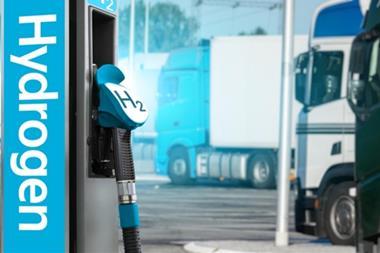
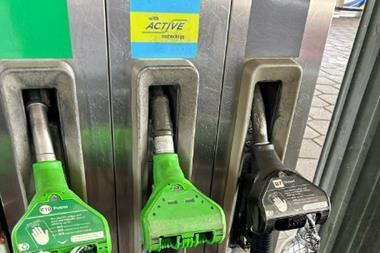
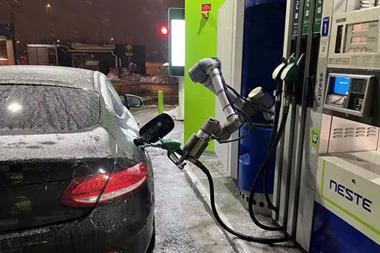
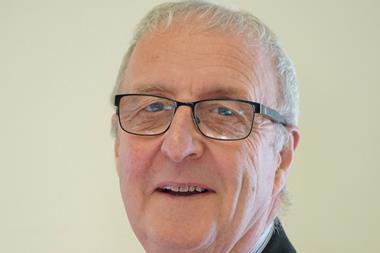
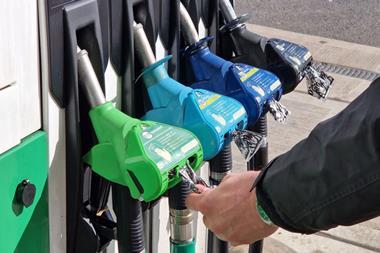
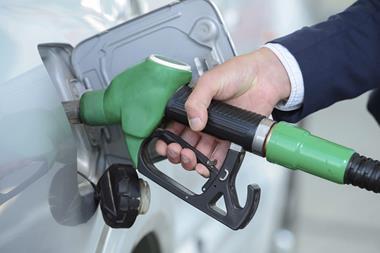

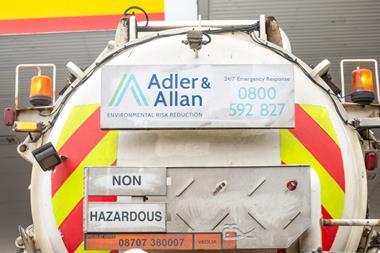
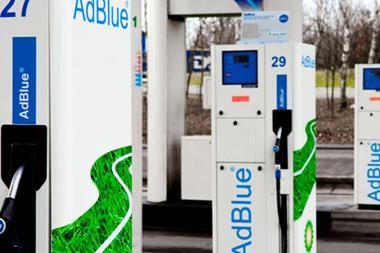
No comments yet